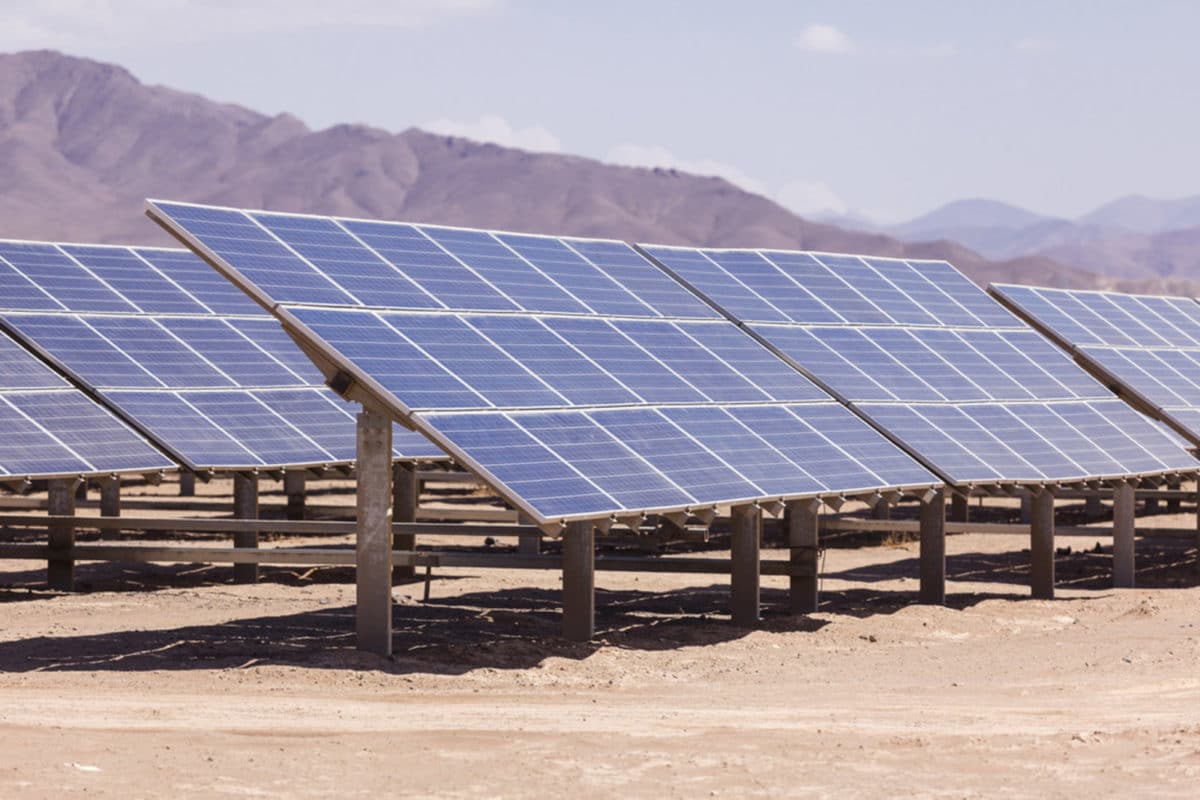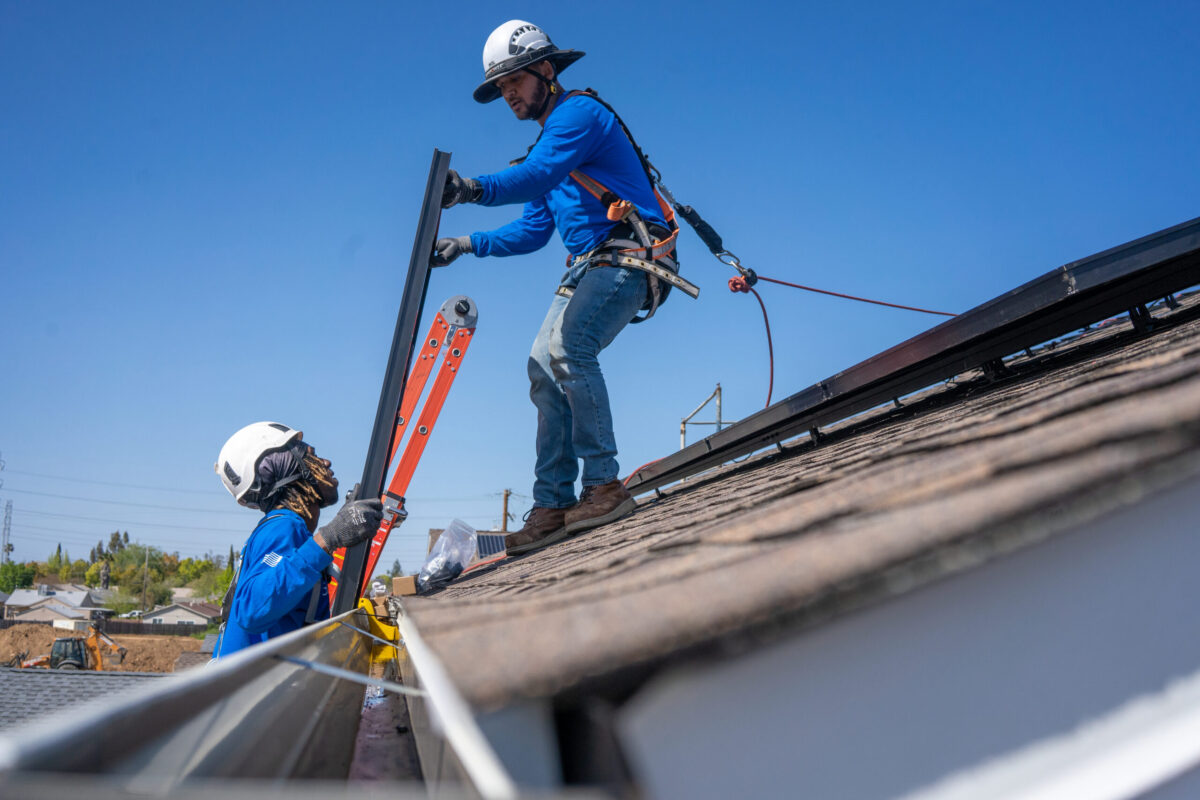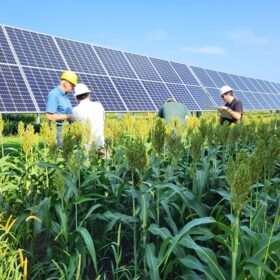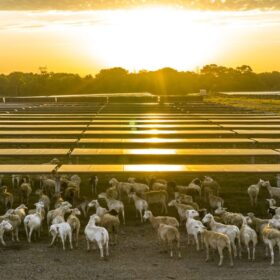High-efficiency PV module manufacturer and distributer, Silfab Solar, a subsidiary of Italy’s Silfab S.r.l., has partnered with Morgan Solar Inc. to develop and mass produce solar PV modules for large commercial and utility-scale projects in the North American market.
The integration of advanced low concentration optics into standard PV modules, using standard manufacturing processes, is said to use “significantly less” silicon, while electrical output remains at a similar level.
In the new modules, which are currently being manufactured for test projects expected to be rolled out next year, 62% less silicon is being used, John Paul Morgan, CTO of Morgan Solar tells pv magazine in an interview. This could go up to 80%, he says.
Performance will be slightly reduced, he adds, but will pale in comparison to the cost savings. “Reduced cells and silicon use per-module can reduce overall module costs by as much as 30 percent,” said the two companies in a statement released earlier.
Current global average module prices for utility-scale are around $0.31 to $0.32/W, Bloomberg New Energy Finance’s Jenny Chase recently told pv magazine. With limited movement on polysilicon prices in H1 2018, market leaders will see H1 prices of around $0.33/W (Based on 10% gross margin), and $0.30/W by mid-year.
Large-scale expansion
Around 10 MW of modules will be produced at Silfab’s Mississauga facility, located just outside of Toronto, for test projects in 2018. However, by 2019, “hundreds of megawatts” are expected to be manufactured, with this ramping up in 2020, if broader market acceptance occurs.
Currently Silfab’s production capacity is around 350 MW, with the company having ramped up from 180 MW in 2015. Morgan says this is being almost fully utilized, with the production of smart module technology, glass on glass solutions and bifacial modules.
To accommodate the expansion, therefore, Morgan says Silfab is currently investing in a “fairly significant” production facility expansion. He declined to go into specifics, and Silfab Solar could not be reached for comment.
Morgan goes on to explain that the technology has been specifically designed to require the “bare minimum” in terms of modifications to standard solar module production lines.
A slicing step has been added, as the slices of cells are narrower – a ¼ cell or smaller is used, although the technology is also compatible with half-cut cells, explains Morgan – and, on the back of this narrower cell, the stringer needs to be modified.
As such, says Morgan, an investment in the hundreds of thousands would be needed to ramp up existing facilities for a large production volume of the new modules.
Morgan Solar is the developer of the SimbaX CPV module and Savanna dual-axis PV tracker. The company recently received CA$3.7 million investment from the Canadian government through the Sustainable Development Technology Canada (SDTC) for development of both the SimbaX panel and its the translucent SPOTlight panel.
To date, says Morgan, tens of millions have been invested in the technology.
He adds the partnership arose after Morgan Solar made the decision two years that if it was to develop a low cost solar technology that could compete with silicon PV, it would need to use existing manufacturing facilities, as opposed to building its own.
Morgan says there is a “natural fit” between Silfab and Morgan Solar, which have worked together in the past on tracker projects.
The article was modified on December 5 to include comment by Morgan Solar; and on December 6 to remove information relating to the ongoing U.S. trade case, as a final decision is still to be made.
This content is protected by copyright and may not be reused. If you want to cooperate with us and would like to reuse some of our content, please contact: editors@pv-magazine.com.









By submitting this form you agree to pv magazine using your data for the purposes of publishing your comment.
Your personal data will only be disclosed or otherwise transmitted to third parties for the purposes of spam filtering or if this is necessary for technical maintenance of the website. Any other transfer to third parties will not take place unless this is justified on the basis of applicable data protection regulations or if pv magazine is legally obliged to do so.
You may revoke this consent at any time with effect for the future, in which case your personal data will be deleted immediately. Otherwise, your data will be deleted if pv magazine has processed your request or the purpose of data storage is fulfilled.
Further information on data privacy can be found in our Data Protection Policy.